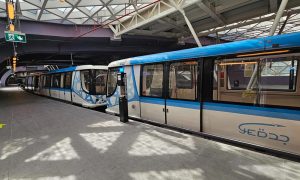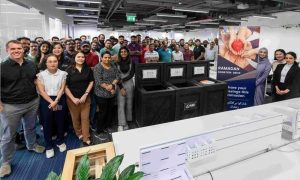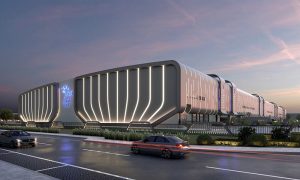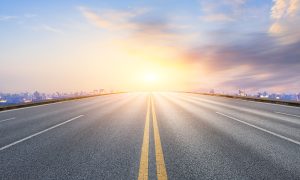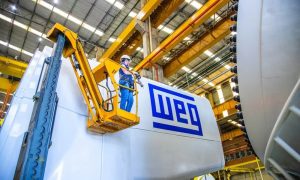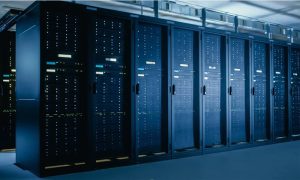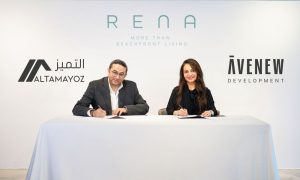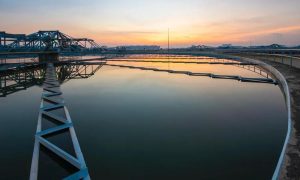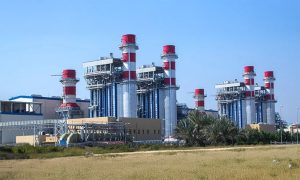Gateway to KSA
Known as the Gateway City, Jeddah?s proximity to Islam?s holiest sites and reputation as a commercial hub has led it to expand a staggering 1000 fold over the past 60 years. In the first of a three-part KSA special, Melanie Mingas explores some of the city?s substantial investments

Jeddah welcomes millions of visitors, pilgrims and new expatriates every year. For some cities such uninhibited growth would create an unprecedented burden, yet KSA’s second city has revelled in the opportunity to launch numerous projects catering to increased demand in all markets.
Ziad Aazam, director of planning and strategic studies, for the Jeddah Development and Urban Regeneration Company (JDURC) says: “Regionally, Jeddah plays an important role in providing a place for higher education and knowledge generation, health services, cultural exchange, governmental services, recreational, hospitality and industrial provisions.”
With a remit to improve the “quality of experience” for residents and visitors alike, JDURC also works to drive economic growth through regeneration. Likewise, Cityscape group director Deep Marwaha says June’s Cityscape event confirmed the “huge market potential”. The group predicts the city will be transformed over the next two decades, with private developers and authorities spearheading projects.
Naming the King Abdullah Economic City (KAEC), Jeddah Gate, Knowledge Economic City and King Abdullah Road, Marwaha adds: “There is a trend towards economic zones which spur the industry and Jeddah has a huge requirement for housing, specifically affordable housing, so there’s a lot of scope for future potential.”
Formed by royal decree in 2006, JDURC is designed to facilitate the public-private crossover, “transforming Jeddah into a dynamic, world-class city.”
“The company leverages its unique position and links with government to develop strategies, concepts, plans and structures for urban regeneration, housing, and infrastructure projects.
These projects are then implemented through public and private partnerships (PPPs),” Aazam explains. There are 14 such partnerships in development, planning and assessment stages, with some offering opportunities for private tenders.
Affordable housing
JDURC is overseeing a number of regeneration and new-build projects to provide affordable housing for Jeddah’s millions of low and middle-income residents. HSBC estimates the city needs one million units by 2014.
Currently in planning stages, the Southern Housing project will provide 30,000 apartments and villas with nearby schools, clinics, retail and leisure facilities, by 2016.
Similarly, the smaller Al Ruwais development will transform a previously unplanned settlement into a “modern and fully-serviced urban environment” by 2017. Additionally, Qasr Khozam will become a sustainable community in central Jeddah, featuring commercial and residential towers. Six other PPP projects are currently in the assessment stages and companies are invited to submit proposals to JDURC.
In September, an unnamed international real-estate company won a SR1.1billion (more than US $293 million) contract for an affordable housing development.
The run-down and unplanned settlements, which currently occupy this area, resulted from a lack of urban planning criteria; while this has now been addressed, a catch-22 remains.
“Population growth is outstripping residential development, with the shortfall in housing created by the lack of a mortgage law. Delays in mortgage legislation mean low-income earners can’t buy low-cost homes so developers don’t build them and because families have a lot of children, whatever housing they are in quickly becomes overcrowded,” says CB Richard Ellis (CBRE) senior director of property advisors Mike Williams.
Recent data from CBRE indicates that house prices are rising in response, despite a 20% decline last year. Marwaha says that additional problems are caused by high land prices and that the government may have to eventually intervene.
Sky-high ambitions
For some developments, money is no object; in fact bigger and better investments encourage bigger and better investors. Due in 2011, the Al Jawhara tower is a 40-storey residential block of penthouses and apartments, over-looking the Red Sea on the Jeddah Corniche; homes are already on sale.
On the commercial side, two $200 million towers at Jeddah Business Park are under construction by Freyssiinet Saudi Arabia, with completion due 2012. And Faden Construction is nearing completion on the King’s Road tower, designed by Abdullah Dughaither Architects and King Consult.
It will be the tallest in Jeddah; until the proposed Mile High Tower is built. Twice the height of the Burj Khalifa and flagged by two ‘mini towers’, both taller than London’s Canary Wharf, tenders have now been issued.
Yet towers, mile high or otherwise, are old news in KSA and the idea of building new economic cities is a cornerstone of its 10×10 vision.
The mega-projects
Outlined in 2000, 10×10 is a three point plan by Saudi Arabia General Investment Authority (SAGIA), aimed to position KSA as one of the world’s top 10 economies by 2010, partly through the creation of four economic cities.
Upon completion (estimated 2025) AEC will sit between Yanbu and Jeddah. A collaboration between
SAGIA and Emaar Properties, the city will be strategically positioned a one-hour drive from Makkah
and no more than a one-hour flight from any Middle Eastern capital city.
The aim is to establish KAEC as “the greatest enabler of socio-economic development” in KSA.
Designed to evolve over time, the 172km² city will be divided into industrial and education zones, a sea port and resort, residential areas and a central business district; each intended to bring direct foreign investment into the Kingdom. Phase one is due for completion next year.
The vision for Emaar Middle East’s Jeddah Gate, is to create a 140,000ft² ‘smart city’ which will become the new centre of Jeddah. Linked to the existing Jeddah by a 70m wide boulevard, it will feature a leasable residential, officeand retail space. Emaar says it is “the new heartbeat in construction”.
In fact, Jeddah Gate won Best Urban Design and Best Residential Project at Cityscape Jeddah 2010. “Economic cities create a community within Jeddah; they include some relatively affordable housing but generally there are a lot of people working within the city who will look to be based there,” comments Marwaha.
New Al Balad
According to JDURC, 400 historical sites have been lost over the past 30 years. There is now a clear resolution to change attitudes and Al Balad, the old city, will be redeveloped ahead of adoption by UNESCO.
Work will focus on pathways, neglected buildings and berths, electrical regulations to prevent fire and the construction of information centres. Cityscape officials say it will be the biggest project in the country.
Similarly, ambitious projects worth $26.7 billion are already underway in neighbouring Makkah. The 601m Makkah Clock Tower was unveiled in August and to ensure millions of pilgrims can conveniently perform Hajj and Umrah, Jeddah’s King Adbul Aziz International Airport will have a
dedicated Hajj terminal.
Part of the Airport City project, the ongoing expansion will cost $2.4 billion and is expected to take a decade to complete. While four groups have been shortlisted for the contract, progress is closely guarded. The completed development will include hotels, office buildings and a flight academy.
Infrastructure investments
The backbone of any functioning city, Jeddah’s infrastructure plans were updated in the five-year strategy. In addition to the airport expansion, plans include substations, solar power plants, railways, roads and ongoing projects at Jeddah Islamic Seaport which will have its capacity doubled by 2020.
The strategy committed a 15.7% share of the $384 billion budget for transport developments; in Jeddah a 15-month review is underway. JDURC will initiate a modern transport system, based on an 18km monorail and 65 hectare central station, connecting all modes of regional and international transport, including the Haramain high-speed rail station. Additionally, opportunities exist for the establishment and management of a formal parking system to ease congestion.
In May, the government announced plans for a metro. It is these practical developments which receive the highest approval from residents.
The remaining issue is the treatment of wastewater; with only 20% of the city connected to sewage pipes, polluted water caused massive problems during 2009 floods. Responsibility has now been delegated to the private sector and huge opportunities for tender are expected over the next five years.
Looking forward
According to JDURC, Jeddah will account for a large proportion of the Kingdom’s SR trillion worth of on-going property developments. Sustainable development will be prioritised. The ultimate aim is diversification from the oil-based economy; a plan reminiscent of many Gulf States. But how can
KSA, particularly Jeddah, avoid the pitfalls that threatened its neighbours’ solvency?
Marwaha advises: “Problems in other markets were over supply and over pricing, which the government is looking to avoid.” A report by the UN conference on Trade and Development
(UNCTAD), names KSA as the world’s eighth highest recipient of direct foreign investment; valued at an estimated $35.46 billion and positioning the country seven places higher than last year.
If the city continues to successfully manage the sheer pace of growth, its share of this figure can only increase. TBP

